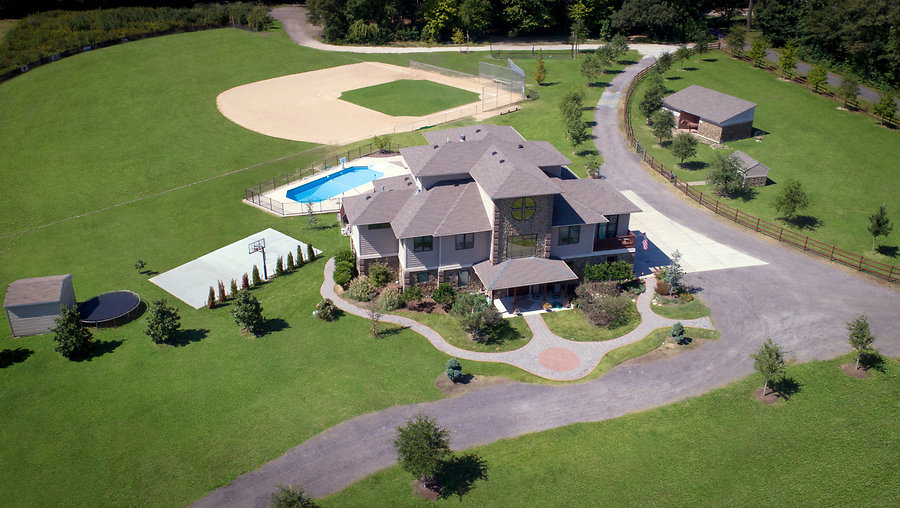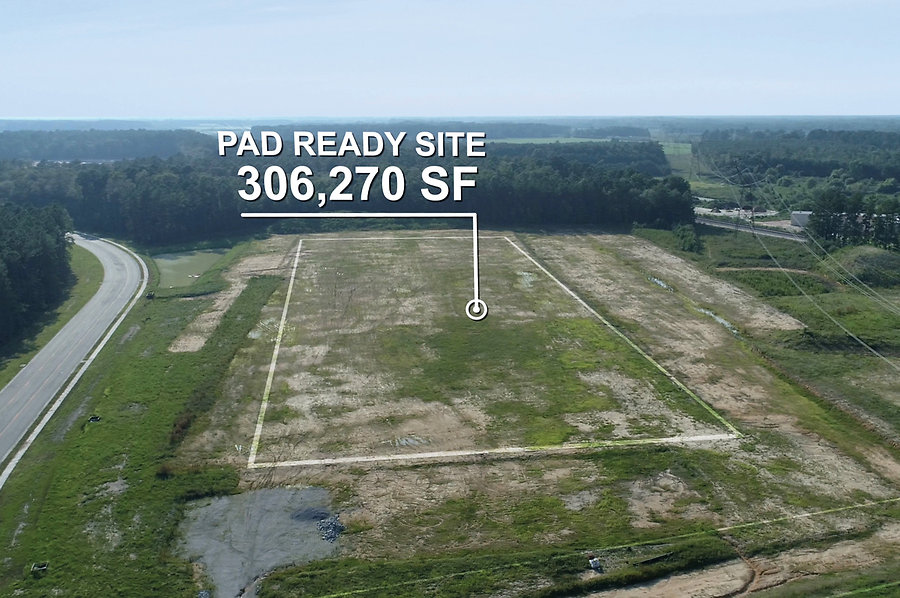 AIR ASPECTS Realtors and developers use quality photography and videography to enhance real estate listings by Rick Spencer "Realtors and developers wanting to sell properties can get a whole new marketing perspective that can increase sales," Terry Young says. Terry is a professional photographer, and CEO of Air Aspects. He is an FAA licensed and insured drone pilot that serves the Hampton Roads Virginia area and northeastern North Carolina. "Real estate professionals who use drone photographs and videos give themselves a competitive advantage- particularly when selling properties surrounded by beautiful landscapes and intriguing architectural features," Terry points out. "Plus, aerial views are just impressive. You can see so much more from the sky compared to what is visible at ground level. The overhead perspective provides an unencumbered view of everything! An image taken from an altitude of 400 feet, for example, can highlight the surrounding neighborhood and the proximity of features that enhance the marketability of the property, such as golf courses and bodies of water. "In contrast, there is always something in the way with pictures taken on the ground," Terry continues. "The photographer may want to shoot a swimming pool, pool house, and fire pit; however, poles, trees, shrubbery or the house itself may obscure a clear view of these amenities. Overhead views can portray these features in a single, compelling image." "Aerial perspectives are particularly enticing for selling high-end properties," Terry insists. "Almost all of the exclusive properties on the market use aerials. It's a great way to sell upscale homes with lovely vistas." One of Terry's impressive videos introduces a housing development with a drone shot that follows the road entering the community. The camera flies past brick pillars on each side of the entrance. The neighborhood's name is shown digitally on the screen. Then, the drone gains elevation and provides aerial views of the community, which has boat docks along the Intracoastal Waterway. On-screen captions describe amenities found on this scenic property.  Terry Young, FAA licensed drone pilot and CEO of Air Aspects In addition to providing aerial images, Terry also provides ground-based photographs and videos of properties, inside and out. The advantage of this is that the settings on his drones and still cameras match, so the lighting and other style elements are consistent both inside and outside a home. "This streamlined process allows me to have quicker turnaround times so that realtors don't have to wait on the finished product from separate photographers and videographers," Terry notes. "Frequently, realtors use one photographer for interior photos and a different photographer for aerials. This can lead to photos being noticeably different in style, which becomes obvious when positioned side-by-side in print or online. "Real estate agents and consumers appreciate having all the images in the artistic style and lighting match. This seamless continuity of quality is a reflection of the real estate agents' professionalism." Skilled at post-production, Terry can edit his photographs as little or as much as necessary to make them look their best. One client wanted a photo of their recently completed dream home as a keepsake. Even though there were still signs of construction, Terry took an aerial photo and transformed it into a treasured keepsake. "I digitally enhanced the original picture, replacing dirt with grass, and removing items in the yard. I even inserted their horse from another photograph into the shot," he recalls. "However, with photos for a real estate listing you have to be careful not to go too far. There is a fine line between enhancing a property, and possibly making it look deceptive." "Real estate professionals who use drone photographs and videos give themselves a competitive advantage- particularly when selling properties surrounded by beautiful landscapes and intriguing architectural features." - Terry Young Terry's years of experience helped him look beyond the shot and see things that people may not think of when preparing for a photo shoot. Many homeowners perform general cleaning, vacuuming, cleaning windows, and dusting flat surfaces, but those can be just the beginning. "While those are obvious, other things include removing questionable artwork and removing seasonal decorations which can date a photograph; hiding evidence of pets (beds, food, and water bowls) and even turning off ceiling fans to prevent the blades from creating a blur in the photo, especially in low-light conditions. Also, If lights need to be on, they should all have the same type of bulbs, not some white and some yellow." In addition to real estate, other industries like tourism, marketing, and construction are discovering the benefits of using aerial photography to create a "wow factor."  Aerial photography allows realtors and developers to show potential buyers the unique architectural features of a property as well as the surrounding landscape. Over his years in business, Terry has worked with many commercial entities, including the City of Norfolk, CBRE, Timmons Group, and GPC Joint Venture for the new high rise bridge project. These companies have used Air Aspect's photography and editing capabilities for planning and marketing purposes, such as 3D tracked logos, markers or plot boundaries for easy reference. This drone pilot takes his job seriously. He offers tips for potential clients considering aerial photography and videography. "With drones being so easy to buy, many people have seen them as a way to make fast, easy money, even if they have no photography background and minimal drone flying experience," he explains. "It is essential that drone pilots are legally certified to fly this type of aircraft." Commercial operators of remote-control guided aircraft must undergo rigorous training and testing before becoming licensed remote pilots. Pilots must also retake the exam every two years. Without proper certification by the FAA, non-certified drone pilots flying commercially can receive a fine of $1,100 per incident. However, Realtors or companies that hire unlicensed drone pilots face even more severe penalties of up to $11,000 per incident. Along with those come potential private lawsuits should an accident happen. Terry also carries $1 million drone liability insurance in case something goes wrong. "An average drone weighs about three to five pounds," Terry says. "That could cause a lot of damage if it fell on someone's property or worse, on an individual from a high altitude. Drone propellers are essentially fast-spinning blades, which can easily cut a person." Terry firmly believes that with this new technology, the sky is the limit, "When it comes to making an impression with aerial and ground-based photography and video, your imagination is your only limitation" he says with a smile.  Aerial view of an undeveloped commerce park with overlay markers Air Aspects 133 Kempsville Road Chesapeake, VA 23320 757-549-4764 www.AirAspects.com |